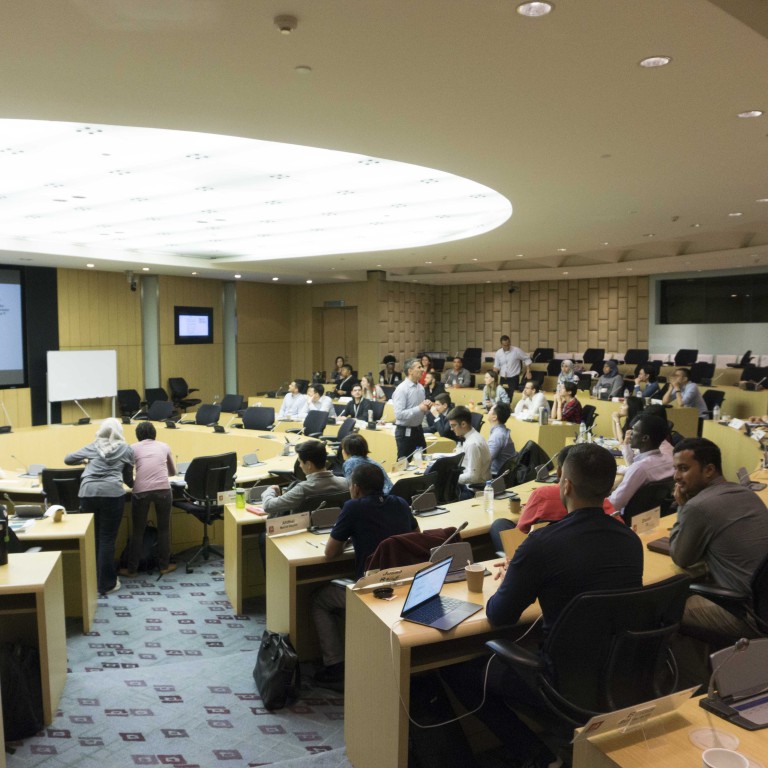
Investing in talent: Playing defence in an age of trade wars and disruptions
[Sponsored Article]
It is an unnerving truth – that countries in Asia have much to lose should tensions between the United States and China escalate into a full-blown trade war.
The world’s two biggest economies have been locked in battle since earlier this year, with the US imposing restrictions on a growing list of Chinese exports over accusations of unfair trade practices and theft of intellectual property.
China has responded tit for tat.
Both countries have already put in place tariffs on steel, aluminium, and some agricultural goods that amount to some US$50 billion on each side, with more in the pipeline.
Economists have estimated that every US$100 billion of imports affected by tariffs would chip away around 0.5 per cent of global trade. Beyond having an impact on imports and exports, the brewing trade skirmish between the US and China also affects the flow of investments and human capital.
As a region that is deeply plugged into the global supply chain, Asian economies – in particular open and trade-dependent markets such as South Korea, Malaysia, Taiwan, and Singapore – are likely to take a big hit.
But it does not mean all is lost. Instead, taking a proactive approach by investing in talent could well be the most important buffer against the perils of an all-out trade conflict.

Staying open and attractive
A strong workforce is the bedrock of any prosperous and vibrant economy.
And staying open – even as many parts of the world are aligning themselves with an increasingly protectionist rhetoric – is one way governments in Asia can approach the talent issue.
Remaining attractive for people who possess the skills, expertise and know-how can help spur or even bring in new industries.
Yan Xuetong, dean of the Institute of International Relations at Tsinghua University in China, said in a recent article that for China to continue to rise in the age of globalisation, it needs to attract as many world-class talent as possible to strengthen its innovation.
“Further opening up is a necessary condition for this,” he added.
Keeping one’s doors open to the rest of the world is important, but it is only one part of the solution, given that immigration can be politically and socially sensitive.
To make sure that an economy stays viable and competitive for the long term, investing in improving the human capital of the local workforce will be key.
Developing a ready and able workforce
Seeds of such an approach are already being planted. Some countries will look to boost their domestic industries to supplant flailing trade.
China, for instance, which has long pushed for the development of top-end semiconductors as a key strategic objective for its economy, is doing more to accelerate the growth of the domestic chip industry.
The government wants local chips to make up at least 40 per cent of China’s semiconductor needs by the middle of the next decade, as part of its Made in China 2025 drive to bolster its own technology capabilities.
New markets may also emerge in light of the Pacific battle between US and China. More South Korean and Japanese companies, for example, could turn their focus to other countries like Vietnam, using it as a key market instead of China to produce and export their products to the US.
These opportunities require local talent – in other words, making sure the workforce is equipped with skills and expertise that are competitive and valuable, allowing them to thrive in a fast-changing economic environment.
International business schools and universities are helping to lead the charge in grooming talent.
The Kuala Lumpur-based Asia School of Business, set up in 2015, aims to develop highly qualified, industry-ready visionaries and entrepreneurs to help organisations in the corporate and public sectors thrive in today’s Asian-centric era.

More specifically, the world-class business graduate school’s goal is to produce leaders who have the technical know-how as well as the practical skills to operate within Asia’s business environment.
Come 2019, the school, which is a collaboration between Bank Negara Malaysia and Massachusetts Institute of Technology’s Sloan School of Management, is set to open the doors to its new, sprawling 20-acre campus. This will allow it to double its maximum class size, which currently stands at 45.
Grooming and nurturing talent is all the more important in today’s digital era, where scores of jobs are being replaced by technological advancements.
For companies, history and scale can only offer limited protection against technology-driven disruption. This means developing the right talent and upskilling the existing workforce has to be a priority.
Think of it not as a battle against the disruptive trade ripostes of the world’s biggest economies or technology, but against the notion of becoming obsolete.
Playing the defence game – by investing in and beefing up the workforce – may just be one’s best bet at winning.

